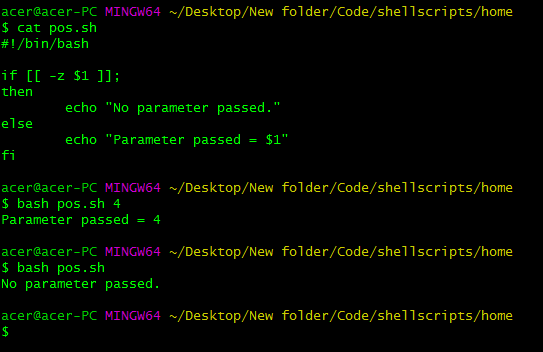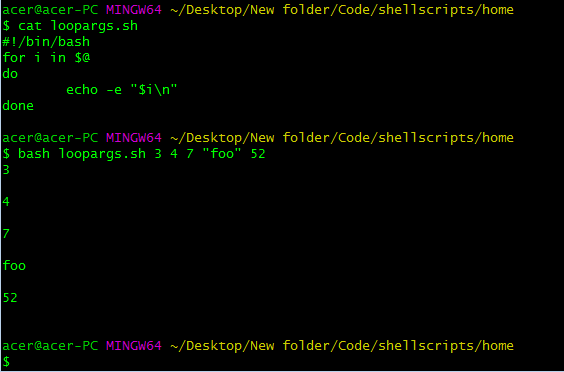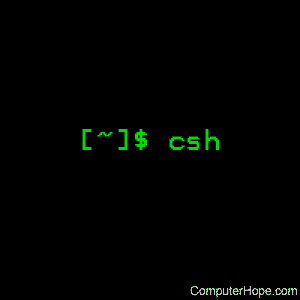There Is No Parameter $1
Introduction
In the realm of language and communication, parameters play a crucial role in defining and constraining the grammatical and syntactic structure of a sentence. However, when it comes to the English language, there is a significant distinction to be made between linguistic parameters and parameters in other domains such as mathematics, statistics, programming, and machine learning. In this article, we will explore the various definitions and applications of parameters in different fields, emphasizing their significance, challenges, and considerations. Additionally, we will address frequently asked questions related to specific terms like “sql parameter postgresql,” “could not determine the data type of parameter $1,” “$1 in golang,” and “postgres parameterized update query there is no parameter $1.”
Definition of a Parameter
Before delving into specific domains, it is essential to grasp the concept of a parameter. In general terms, a parameter refers to a characteristic or factor that determines the overall behavior, functionality, or constraints of a system or process. It serves as a variable that defines the boundaries and configuration of a particular context, allowing precise control and manipulation of its outcomes.
Parameters in Mathematics
In mathematics, parameters have a distinct role in representing the arbitrary constants or quantities that define a mathematical expression. They help define the relationship between variables and enable the establishment of equations, functions, and mathematical models. Parameters can affect the shape, location, or behavior of a mathematical object, providing flexibility and adaptability to different scenarios. For example, in the equation of a straight line, y = mx + c, ‘m’ represents the slope of the line, while ‘c’ represents the y-intercept.
Parameters in Statistics
In statistics, parameters refer to the numerical quantities that describe the population and probability distributions. They provide crucial insights into the underlying characteristics of a dataset or phenomenon before making inferences or generalizations. Parameters such as mean, variance, standard deviation, and correlation coefficients help in estimating and comparing populations, identifying trends, and predicting future outcomes. These values aid in constructing statistical models and drawing statistical inferences.
Parameters in Programming
When it comes to programming, parameters take on a slightly different meaning. In programming languages, parameters serve as variables that allow passing values or references to functions, methods, or program routines. They act as placeholders that enable the flexibility of executing reusable code blocks with varying inputs. In languages like Java, C++, or Python, parameters define the input and output requirements of functions, facilitating modular and efficient programming. For instance, in the function definition void PrintName(String name), ‘name’ acts as the parameter that represents the input value to be printed.
Parameters in Machine Learning
Machine learning heavily relies on parameters to fine-tune and optimize models for specific tasks. In this context, parameters are values or weights assigned to different features or characteristics of a given dataset. By adjusting these parameters through an optimization process, machine learning algorithms aim to minimize errors and maximize the accuracy of predictions. For example, in a neural network model, parameters define the connection strengths between nodes, influencing the model’s ability to classify or predict accurately.
The Importance of Parameters
Parameters play a significant role in numerous domains due to their ability to define, control, and refine various systems. Their importance lies in the following key aspects:
1. Precision and Flexibility: Parameters allow for precise control over systems by providing a framework within which values and variables can be altered or adjusted. This grants flexibility and adaptability to the system based on specific requirements or changes in the environment.
2. Customizability: By modifying parameter values, systems can be tailored to specific needs, enabling customization and optimization according to different scenarios or objectives.
3. Consistency and Standardization: Parameters help establish standards and guidelines for ensuring consistency and uniformity in various processes or models. By defining these boundaries, parameters promote interoperability and facilitate effective collaboration.
Challenges and Considerations with Parameters
While parameters bring tremendous advantages, certain challenges and considerations arise in their implementation:
1. Determining an Appropriate Value: Selecting a suitable value for a parameter can be a complex task, particularly in cases where various factors or uncertainties come into play. The choice of parameter values significantly impacts the performance, accuracy, and reliability of systems, requiring rigorous testing and validation.
2. Overfitting and Underfitting: In machine learning, proper parameter selection is crucial to prevent overfitting (when the model is too specific to the training data) or underfitting (when the model is not adequately capturing the underlying patterns). Striking the right balance is essential to ensure optimal generalization and performance.
Frequently Asked Questions (FAQs)
Q1: What is an SQL parameter in PostgreSQL?
A1: In PostgreSQL, an SQL parameter is a placeholder used to pass values into SQL statements. It helps prevent SQL injection attacks and supports dynamic queries by substituting variable values into the query.
Q2: How can I resolve the “could not determine data type of parameter $1” error in PostgreSQL?
A2: The “could not determine data type of parameter $1” error occurs when PostgreSQL cannot infer the data type of a parameter in a query. To resolve this, you can explicitly specify the data type of the parameter using a cast, for example: $1::text.
Q3: What does “$1” mean in Golang?
A3: In Golang, “$1” is typically used within regular expressions to refer to the first matched group. It allows referencing previous matches within the same regex pattern.
Q4: How can I perform a parameterized update query in PostgreSQL?
A4: To perform a parameterized update query in PostgreSQL, you can use the “UPDATE” statement with placeholders for the values to be updated. Then, execute the query with the desired parameter values through a prepared statement, which ensures efficient execution and protects against SQL injection.
Conclusion
Parameters serve as indispensable tools in diverse domains, including mathematics, statistics, programming, and machine learning. While their applications differ across these realms, the essence of parameters lies in their ability to define constraints, enable customization, and foster precision and adaptability. While challenges and considerations accompany their usage, parameters remain pivotal in unlocking the true potential of various systems and processes.
Databases: \”Error: There Is No Parameter $1\” In \”Execute .. Using ..;\” Statement In Plpgsql
Keywords searched by users: there is no parameter $1 sql parameter postgresql, could not determine data type of parameter $1, $1 in golang, postgres parameterized update query
Categories: Top 56 There Is No Parameter $1
See more here: nhanvietluanvan.com
Sql Parameter Postgresql
Introduction:
Structured Query Language (SQL) is a crucial language used for managing and manipulating databases. When working with databases, it is common to encounter situations where user input needs to be incorporated into SQL queries. This is where SQL parameters come into play.
In the context of the PostgreSQL database management system, SQL parameters offer a secure and efficient way to handle user input while preventing unwanted security vulnerabilities such as SQL injection attacks. In this article, we will delve into the concept of SQL parameters, their significance, and how they can be leveraged effectively in PostgreSQL.
Understanding SQL Parameters:
SQL parameters (also referred to as placeholders) are placeholders used in SQL statements to represent values that will be provided later when executing the query. Instead of directly embedding values into SQL queries, parameters act as variables that hold those values, allowing for flexibility and improved security.
Why Use SQL Parameters?
1. Preventing SQL Injection:
SQL injection is a common attack vector where an attacker manipulates user input to alter the structure of an SQL query, thereby gaining unauthorized access to the database or causing data loss. By using SQL parameters, the input values are treated separately from the query itself, preventing attackers from injecting malicious code.
2. Improved Performance:
SQL parameters offer performance benefits by allowing PostgreSQL to generate query execution plans that are reusable across multiple executions. The database engine can precompile the query, avoiding the need to reparse the SQL statement on each execution. This leads to faster execution times and efficient resource utilization.
3. Enhanced Maintainability:
Separating the query from its input values through SQL parameters enhances maintainability. By making the query independent of specific values, it becomes easier to modify or reuse the query for different scenarios, reducing code duplication and improving code maintenance.
Using SQL Parameters in PostgreSQL:
PostgreSQL provides various mechanisms to make use of SQL parameters in your queries. Let’s explore some popular methods:
1. Using Positional Parameters:
Positional parameters allow you to define placeholders in the query using numbered symbols (?). The number represents the order in which the corresponding values should be bound to the parameter.
Example:
“`sql
SELECT * FROM users WHERE age >= ? AND name = ?;
“`
2. Using Named Parameters:
Named parameters are placeholders in the query that are represented by names preceded by a colon (:). Unlike positional parameters, they are identified by their names instead of their positions.
Example:
“`sql
SELECT * FROM users WHERE age >= :min_age AND name = :user_name;
“`
3. Prepared Statements:
Prepared statements provide a way to optimize the execution of queries that are executed repeatedly with different parameter values. The query is sent to the database once, and the parameter values can be bound to the statement multiple times without the need for re-parsing.
Example:
“`sql
PREPARE my_statement (varchar, int) AS
SELECT * FROM users WHERE name = $1 AND id = $2;
EXECUTE my_statement (‘John Doe’, 1);
EXECUTE my_statement (‘Jane Smith’, 2);
“`
FAQs:
Q1. Can SQL parameters be used for any data type?
Yes, SQL parameters can be used with any data type supported by PostgreSQL, such as text, integer, boolean, etc. The specific data type of the parameter should be specified when defining the prepared statement or when binding the value to the parameter.
Q2. How can I protect against SQL injection attacks when using SQL parameters?
SQL parameters alone provide protection against SQL injection attacks as they separate user input from the actual query execution. However, it is essential to ensure that all user input is properly validated and sanitized before using them as parameters in SQL queries.
Q3. Are SQL parameters specific to PostgreSQL, or can they be used with other relational databases?
SQL parameters are a language-agnostic concept and can be used with any relational database that supports parameterized queries. Popular relational databases such as MySQL, Oracle, and Microsoft SQL Server also provide support for SQL parameters.
Q4. Are there any performance considerations while using SQL parameters in PostgreSQL?
Using SQL parameters generally leads to better performance due to query caching and plan reusability. However, it is crucial to ensure that the parameters are appropriately bound to the query, and indexing is employed where necessary to optimize query execution.
Q5. Can SQL parameters be used in other types of SQL statements apart from SELECT?
Yes, SQL parameters can be used with other SQL statements such as INSERT, UPDATE, DELETE, and even in DDL statements like CREATE and ALTER. Parameters provide flexibility regardless of the type of statement or operation being performed.
Conclusion:
SQL parameters offer a powerful mechanism for handling user input securely and efficiently in PostgreSQL. By utilizing parameters, developers can prevent SQL injection attacks, improve performance, and enhance code maintenance. Whether using positional or named parameters or leveraging prepared statements, the adoption of SQL parameters in PostgreSQL is crucial for developing secure and high-performing database applications.
Could Not Determine Data Type Of Parameter $1
In the world of programming and computer science, errors are an unavoidable part of the process. One such error that developers often come across is “Could not determine data type of parameter $1.” This cryptic message can be frustrating, especially when it interrupts the smooth flow of your code. In this article, we will explore this error in depth, aiming to help you understand what it means, why it occurs, and provide you with troubleshooting tips to resolve it.
Understanding the Error:
The error message “Could not determine data type of parameter $1” typically occurs when working with databases and SQL queries. This error commonly appears in various programming languages, including but not limited to PHP, Python, and Node.js. It indicates that the system encountered difficulties determining the data type of the parameter represented by $1 in a prepared statement.
Prepared statements are SQL statements that are precompiled and stored in a database. They can significantly improve performance, security, and efficiency of database operations. However, when a prepared statement encounters a parameter that lacks a determined data type, it triggers this error.
Possible Causes:
There are several reasons why the system might fail to determine the data type of a parameter:
1. Undefined or Null Parameter: If the parameter being passed to the prepared statement is undefined or null, the system cannot ascertain its data type, which results in this error.
2. Inconsistent Usage of Binding Methods: Different programming languages and frameworks have various ways of binding parameters to prepared statements. Mixing or misusing these methods can lead to confusion and the inability to determine the data type.
3. Incorrect Query Construction: If the SQL query itself is poorly constructed or has syntax errors, it can interfere with the determination of the data type for parameters.
Troubleshooting Tips:
When encountering the “Could not determine data type of parameter $1” error, consider the following troubleshooting tips:
1. Check Parameter Values: Verify that all parameters passed to the prepared statement are defined and contain valid values. If any parameter is null or undefined, assign an appropriate value or reconsider its necessity.
2. Review Binding Methods: Ensure that you are binding parameters correctly based on the specific programming language or framework you are using. Consult the relevant documentation or community for guidelines on binding methods.
3. Validate Query Syntax: Examine your SQL query for any syntax errors or inconsistencies. Use query validation tools or debuggers to identify and resolve any issues.
4. Utilize Explicit Data Typing: If the system still cannot determine the data type of a parameter, explicitly specify the data type during binding. This step can prevent ambiguity and help the system understand how to handle the parameter.
5. Test with Sample Data: Experiment with different data values and types to identify patterns or specific data combinations that trigger the error. By doing so, you can gain insights into potential cause(s) and develop appropriate strategies to handle them.
FAQs Section:
Q: Is the “Could not determine data type of parameter $1” error specific to a particular programming language or database?
A: No, this error can occur across various programming languages and databases, especially when using prepared statements.
Q: How can I determine which parameter ($1, $2, etc.) is causing the error?
A: The parameter number alone may not be sufficient to pinpoint which one is causing the issue. Instead, try isolating and testing each parameter individually to identify the problematic one.
Q: Can this error occur when using an ORM (Object-Relational Mapping) tool?
A: Yes, this error can arise when using ORM tools that generate prepared statements internally. Ensure that you follow the guidelines provided by the ORM tool to correctly bind parameters and avoid this error.
Q: Are there any performance implications of using prepared statements?
A: Prepared statements generally improve performance due to their precompiled nature, but this error can hinder their effectiveness. It is important to address and resolve the error to fully benefit from the advantages offered by prepared statements.
In conclusion, encountering the “Could not determine data type of parameter $1” error can be frustrating for developers. However, by understanding its causes and following the troubleshooting tips provided in this article, you can effectively resolve this error and ensure the smooth execution of your code. Remember to check parameter values, review binding methods, validate query syntax, utilize explicit data typing, and experiment with different data samples to identify and tackle the underlying issues.
$1 In Golang
In the world of programming languages, Go, also known as Golang, has gained immense popularity for its simplicity, efficiency, and robustness. Developed by Google engineers, Go has quickly become a widely-used language for building scalable and reliable software applications. In this article, we will explore the concept of $1 in Golang, its significance, and how it can be leveraged to enhance the functionality of your Go programs.
$1 in Golang – The Basics
In Golang, the concept of $1 primarily refers to the use of anonymous variables in function signature and invoking functions with missing arguments. Go allows developers to omit certain arguments while calling a function by substituting them with a single dollar sign ($). This can be useful in scenarios where you are only interested in a subset of the available arguments or when you are unsure about the exact number of arguments required.
For instance, consider a function that accepts a variable number of arguments and performs some calculations. Instead of explicitly providing all the arguments, you can use $1 to indicate that a specific argument is not necessary. This flexibility enables you to write cleaner and more concise code.
An example of using $1 can be seen below:
“`go
func calculateSum(numbers …int) int {
sum := 0
for _, number := range numbers {
sum += number
}
return sum
}
// Example usage
sum := calculateSum(1, 2, 3, $1, 5)
// Here, the fourth argument is skipped using $1
“`
In this example, we are calculating the sum of all the provided numbers using the `calculateSum` function. However, we want to skip the fourth argument and calculate the sum of only the first three and the fifth argument. By using $1 in the function call, Golang understands that the fourth argument should be ignored.
$1 – Frequently Asked Questions (FAQs)
Q1: Can I use $1 in any function call?
A1: No, $1 can only be used in the arguments section of a function call and is primarily used with variadic functions or functions with optional arguments. If a function does not support variadic arguments, attempting to use $1 will result in a compilation error.
Q2: Can I use $1 multiple times in a function call?
A2: Yes, you can use $1 multiple times in a function call to skip different arguments. Each $1 refers to a unique missing argument.
Q3: What happens if I provide more arguments than expected in a function call using $1?
A3: Golang only ignores the arguments specified as $1 and beyond. If you provide additional arguments after $1, they will still be considered for the function execution.
Q4: Can I use $1 in the function signature?
A4: No, $1 is only applicable in function calls. It cannot be used in the function declaration or signature.
Q5: Are there any limitations or caveats when using $1 in Golang?
A5: While $1 can be a powerful tool, it is essential to use it judiciously. Overusing $1 may lead to confusion and difficult-to-maintain code. It is best to keep the usage of $1 limited to scenarios where it significantly improves the readability or functionality of your code.
Conclusion
The concept of $1 in Golang provides developers with a convenient way to omit certain arguments when calling functions. By using $1, you can write more concise and flexible code, especially when dealing with variadic functions or optional arguments. However, it is important to use $1 judiciously and avoid excessive use, as it can potentially complicate the codebase and reduce readability.
FAQs:
Q1: Can I use $1 in any function call?
A1: No, $1 can only be used in the arguments section of a function call and is primarily used with variadic functions or functions with optional arguments.
Q2: Can I use $1 multiple times in a function call?
A2: Yes, you can use $1 multiple times in a function call to skip different arguments. Each $1 refers to a unique missing argument.
Q3: What happens if I provide more arguments than expected in a function call using $1?
A3: Golang only ignores the arguments specified as $1 and beyond. If you provide additional arguments after $1, they will still be considered for the function execution.
Q4: Can I use $1 in the function signature?
A4: No, $1 is only applicable in function calls. It cannot be used in the function declaration or signature.
Q5: Are there any limitations or caveats when using $1 in Golang?
A5: While $1 can be a powerful tool, it is essential to use it judiciously. Overusing $1 may lead to confusion and difficult-to-maintain code. It is best to keep the usage of $1 limited to scenarios where it significantly improves the readability or functionality of your code.
Images related to the topic there is no parameter $1

Found 30 images related to there is no parameter $1 theme





Article link: there is no parameter $1.
Learn more about the topic there is no parameter $1.
- Pl/pgSQL there is no parameter $1 in EXECUTE statement
- “ERROR: there is no parameter $1” in “EXECUTE .. USING …
- There is no parameter $1 · Issue #1 · fuxingZhang/postgres
- ERROR: there is no parameter $1 – PostgreSQL
- [ADMIN] ERROR: there is no parameter $1 – narkive
See more: nhanvietluanvan.com/luat-hoc